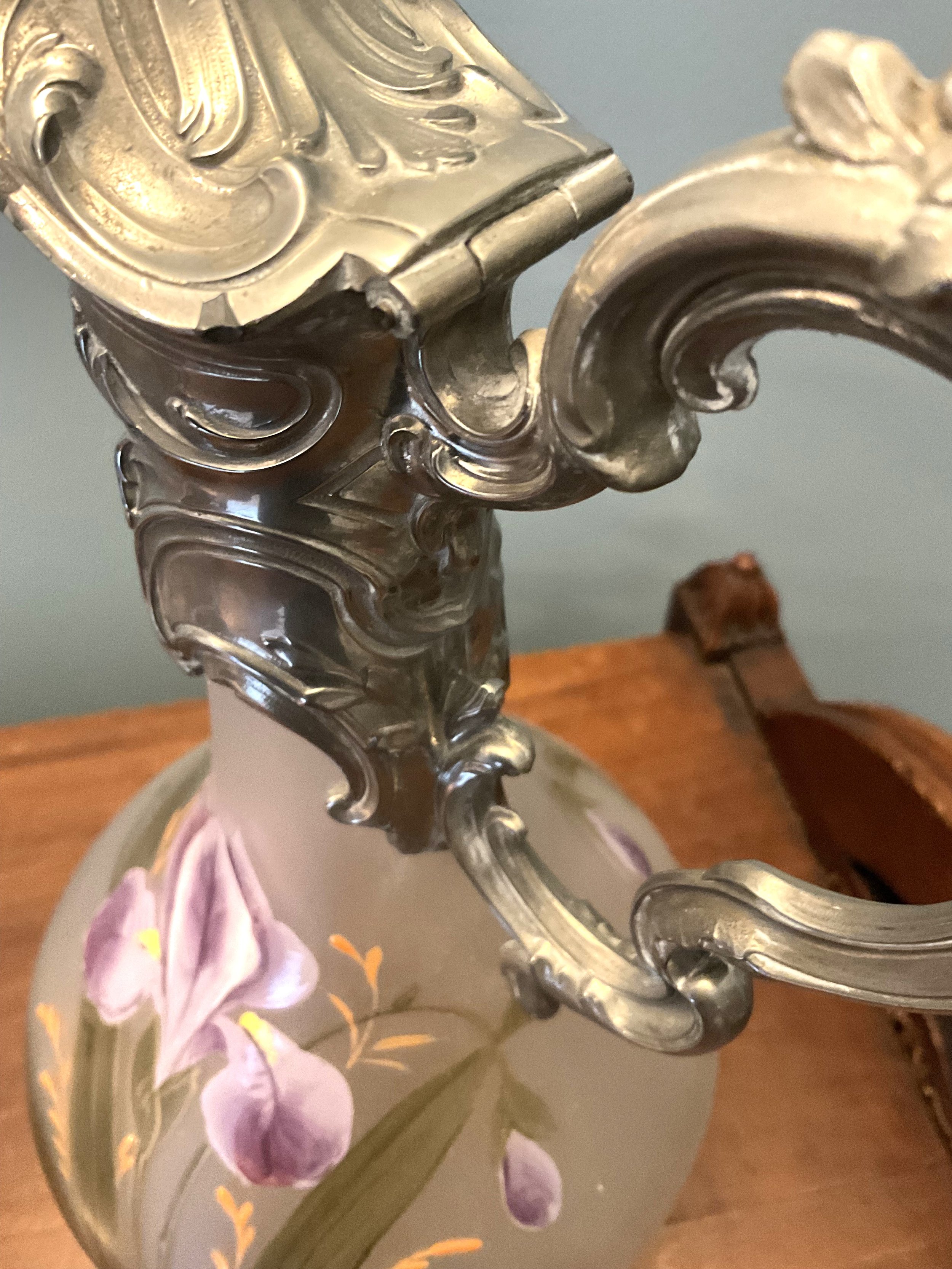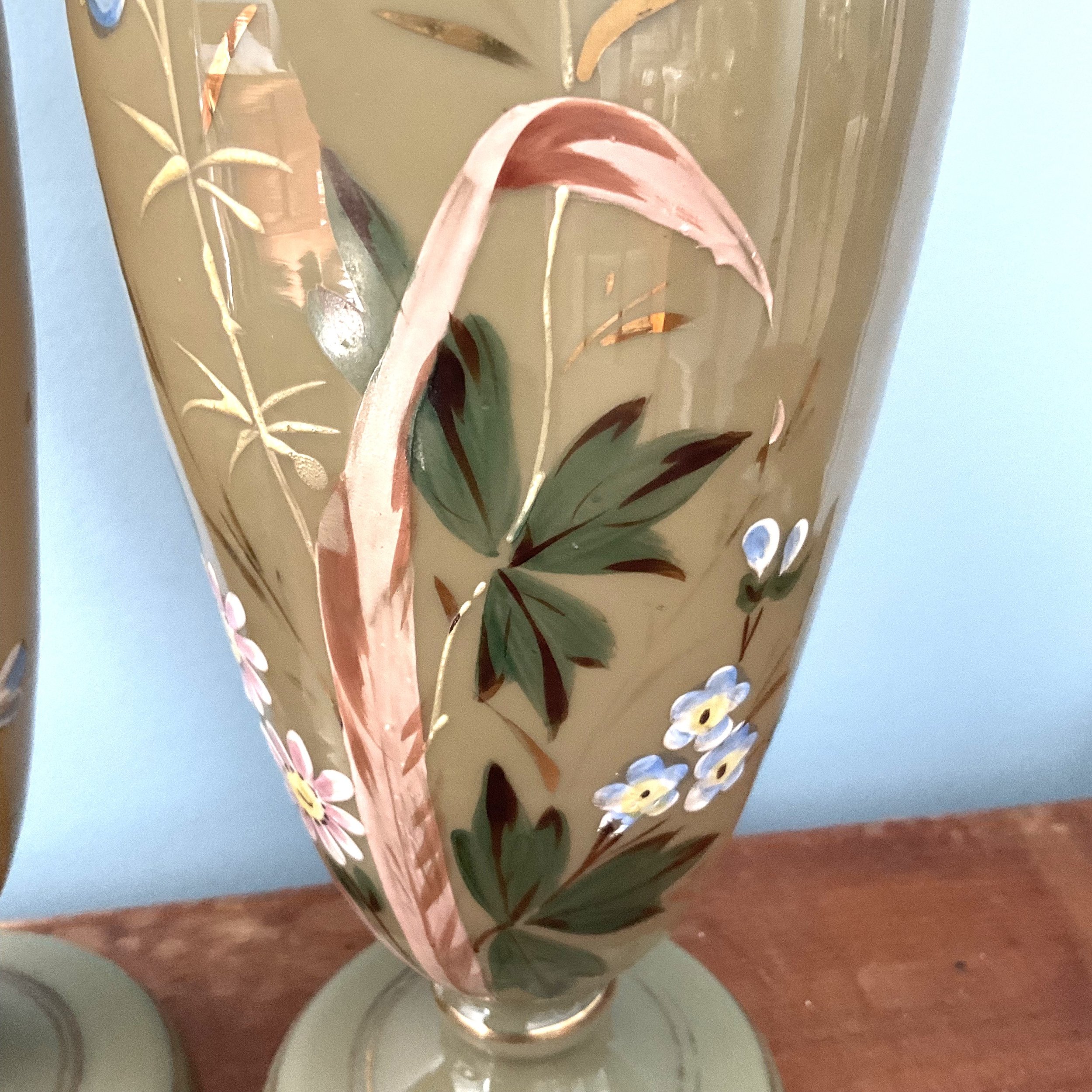 Image 1 of 8
Image 1 of 8

 Image 2 of 8
Image 2 of 8

 Image 3 of 8
Image 3 of 8

 Image 4 of 8
Image 4 of 8

 Image 5 of 8
Image 5 of 8

 Image 6 of 8
Image 6 of 8

 Image 7 of 8
Image 7 of 8

 Image 8 of 8
Image 8 of 8









Daum France Art Glass Bowl
This lustrous artglass bowl most likely started out life as an ashtray. Typical of the Daum artglass of the early 20th century, with dense undulating waves of clear glass, this bowl takes on changing forms when viewed at different angles. The folds in the glass are stunning. It is signed ‘Daum France’ on the lower outside edge.
Art Nouveau glass was undulating and sinuous. It was inspired by natural forms. Larger than a drinking glass, it was decorative rather than functional. It was usually made by hand. Little tableware was produced at this time. One of the most famous designers ever to work in glass was the Frenchman Rene Lalique. During the French art deco glass period, designers such as Emile Galle, Daum Freres, Muller Freres and Schneider elevated French art glass pieces to the highest level. Emile Galle was considered the master of cameo glass which is a process where etching techniques were used to remove layers of glass, revealing the layer underneath and creating images in relief. Daum was responsible for the development of acid etching which added texture and cloudiness to the glass. He also created the use of wheel ground surfaces which produced a hammered, beaten effect. With the onset of WW1, development and production halted. Post WW1, Daum reemerged to develop Pate de verre. This involved a process where crushed coloured glass was reheated and used as the initial melt from which new pieces could be made. Daum’s Christalerie de Nancy worked with brilliantly clear lead crystal blown into vases and other items or tooled while still moulted to produce figurine and sculpted pieces. Galle introduced decorative bubbles and metallic foils as layers. Lalique created new signature vases, perfume bottles, glass plaques and stemware.
This glass bowl is approximately 14 cms in height, 16 cms in length and 13.5 cms in width.
This lustrous artglass bowl most likely started out life as an ashtray. Typical of the Daum artglass of the early 20th century, with dense undulating waves of clear glass, this bowl takes on changing forms when viewed at different angles. The folds in the glass are stunning. It is signed ‘Daum France’ on the lower outside edge.
Art Nouveau glass was undulating and sinuous. It was inspired by natural forms. Larger than a drinking glass, it was decorative rather than functional. It was usually made by hand. Little tableware was produced at this time. One of the most famous designers ever to work in glass was the Frenchman Rene Lalique. During the French art deco glass period, designers such as Emile Galle, Daum Freres, Muller Freres and Schneider elevated French art glass pieces to the highest level. Emile Galle was considered the master of cameo glass which is a process where etching techniques were used to remove layers of glass, revealing the layer underneath and creating images in relief. Daum was responsible for the development of acid etching which added texture and cloudiness to the glass. He also created the use of wheel ground surfaces which produced a hammered, beaten effect. With the onset of WW1, development and production halted. Post WW1, Daum reemerged to develop Pate de verre. This involved a process where crushed coloured glass was reheated and used as the initial melt from which new pieces could be made. Daum’s Christalerie de Nancy worked with brilliantly clear lead crystal blown into vases and other items or tooled while still moulted to produce figurine and sculpted pieces. Galle introduced decorative bubbles and metallic foils as layers. Lalique created new signature vases, perfume bottles, glass plaques and stemware.
This glass bowl is approximately 14 cms in height, 16 cms in length and 13.5 cms in width.
This lustrous artglass bowl most likely started out life as an ashtray. Typical of the Daum artglass of the early 20th century, with dense undulating waves of clear glass, this bowl takes on changing forms when viewed at different angles. The folds in the glass are stunning. It is signed ‘Daum France’ on the lower outside edge.
Art Nouveau glass was undulating and sinuous. It was inspired by natural forms. Larger than a drinking glass, it was decorative rather than functional. It was usually made by hand. Little tableware was produced at this time. One of the most famous designers ever to work in glass was the Frenchman Rene Lalique. During the French art deco glass period, designers such as Emile Galle, Daum Freres, Muller Freres and Schneider elevated French art glass pieces to the highest level. Emile Galle was considered the master of cameo glass which is a process where etching techniques were used to remove layers of glass, revealing the layer underneath and creating images in relief. Daum was responsible for the development of acid etching which added texture and cloudiness to the glass. He also created the use of wheel ground surfaces which produced a hammered, beaten effect. With the onset of WW1, development and production halted. Post WW1, Daum reemerged to develop Pate de verre. This involved a process where crushed coloured glass was reheated and used as the initial melt from which new pieces could be made. Daum’s Christalerie de Nancy worked with brilliantly clear lead crystal blown into vases and other items or tooled while still moulted to produce figurine and sculpted pieces. Galle introduced decorative bubbles and metallic foils as layers. Lalique created new signature vases, perfume bottles, glass plaques and stemware.
This glass bowl is approximately 14 cms in height, 16 cms in length and 13.5 cms in width.







































